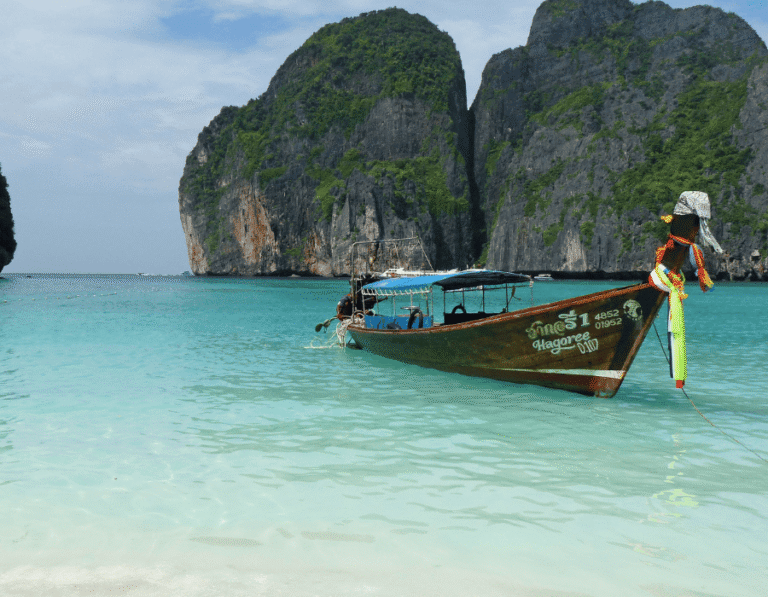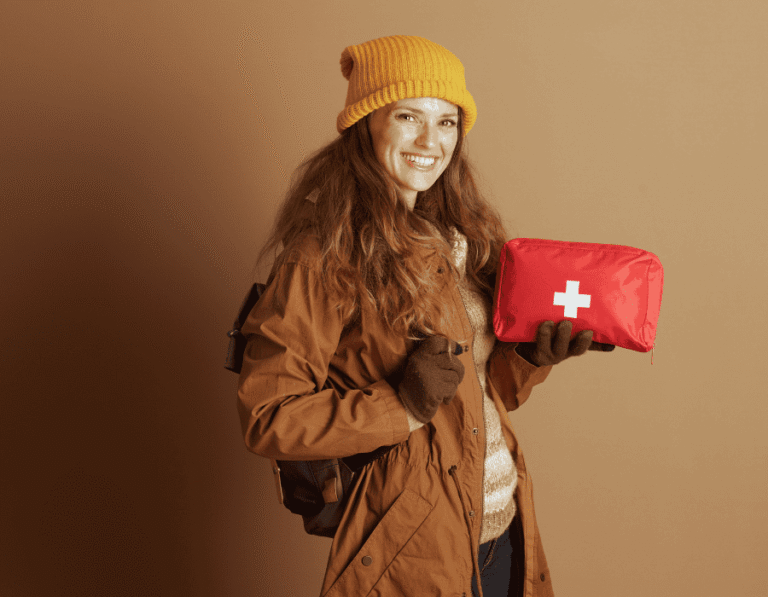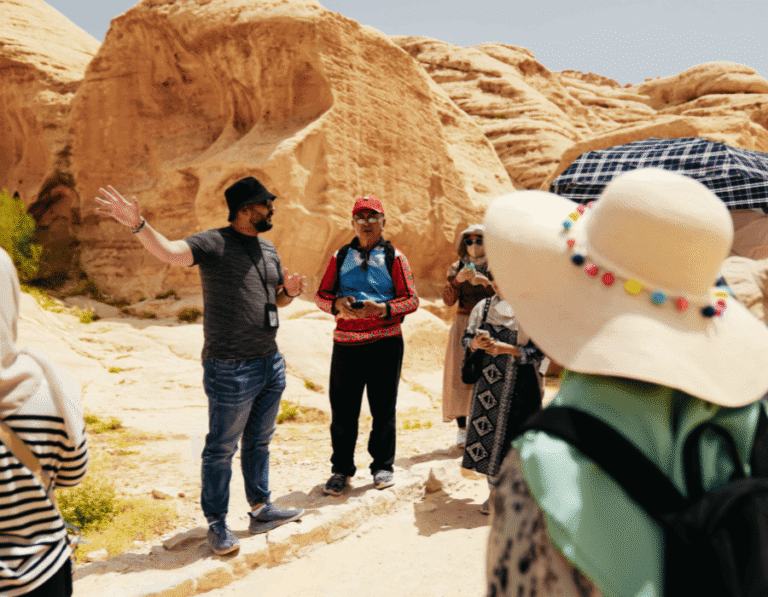Also known as “boondocking” or “wild camping”, dispersed camping is a unique alternative to traditional campground camping. While it’s definitely a fun experience, it’s important to be well-prepared about the responsibilities and challenges that come with it.
In this guide, we’ll explore everything you need to know about dispersed camping, from who it’s best suited for and how to pack for it, to the pros and cons, legal regulations, and other dispersed camping tips!
What Is Dispersed Camping?
Dispersed camping is a form of camping where individuals set up their tents or RVs outside of designated campgrounds on public lands.
This type of camping takes place in areas managed by federal agencies such as the National Forest Service (NFS) and the Bureau of Land Management (BLM). Unlike traditional campgrounds, dispersed camping areas do not offer amenities like restrooms, potable water, picnic tables, or fire pits.
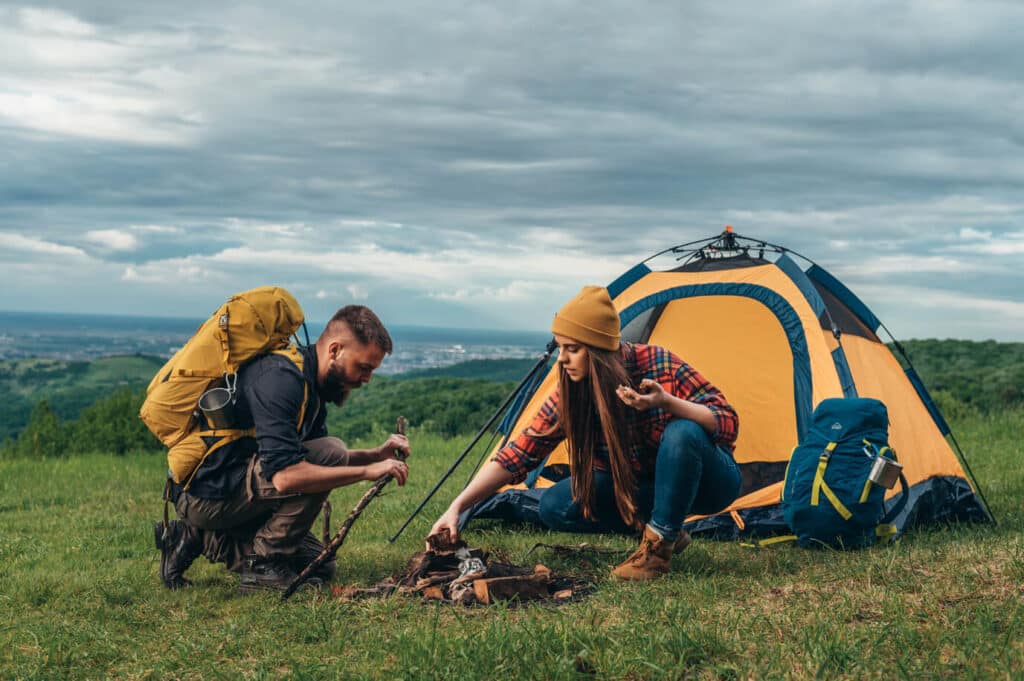
Who Should Go For Dispersed Camping?
While it can be enjoyed by a wide range of outdoor enthusiasts, dispersed camping is particularly suited for those who are prepared for a more primitive and self-sufficient adventure. Here are some profiles of who should consider dispersed camping:
- Adventurous Spirits: Dispersed camping is perfect for those who crave adventure and enjoy exploring off-the-beaten-path locations. If you are someone who thrives on discovering new places, enjoys solitude, and appreciates the challenge of setting up camp in remote areas, dispersed camping might be the right choice for you.
- Families: While dispersed camping can be more challenging than traditional camping, it can still be suitable for families, especially those with a spirit of adventure and a willingness to prepare thoroughly. Family dispersed camping trips can provide unique opportunities for bonding and education.
- Solo Campers: Dispersed camping is also ideal for solo campers who enjoy the peace and solitude of nature. It allows for a deeply personal and introspective experience, away from the noise and activity of developed campgrounds.

Pros And Cons Of Dispersed Camping
Dispersed camping offers a unique and immersive outdoor experience, but it also comes with its own set of advantages and challenges.
Here are the pros and cons to help you decide if dispersed camping is right for you.
Pros
- Privacy & solitude: Unlike developed campgrounds, dispersed camping spots are often far from the beaten path, providing a serene environment where you can truly disconnect from the hustle and bustle.
- Cost-effectiveness: Most dispersed camping areas are free of charge, making it an affordable option for extended trips or frequent campers.
- Unique experiences: Dispersed camping allows you to explore less-traveled regions, offering a sense of adventure and discovery.
- Flexibility: You have the freedom to select your campsite based on your preferences for scenery, proximity to water, or level of seclusion.
- Empowerment: Successfully planning and executing a dispersed camping trip can provide a great sense of accomplishment and confidence.
Cons
- Lack of amenities: There are no restrooms, potable water sources, picnic tables, or trash disposal services. You must bring everything you need and pack out all waste.
- Safety concerns: Being in a remote area can pose risks if an emergency arises, as help may be far away and cell service may be limited.
- Permits & regulations: Different public lands have varying rules and regulations regarding dispersed camping, which can be confusing and require diligent research. Some areas may require permits, especially in high-use regions or during certain times of the year.
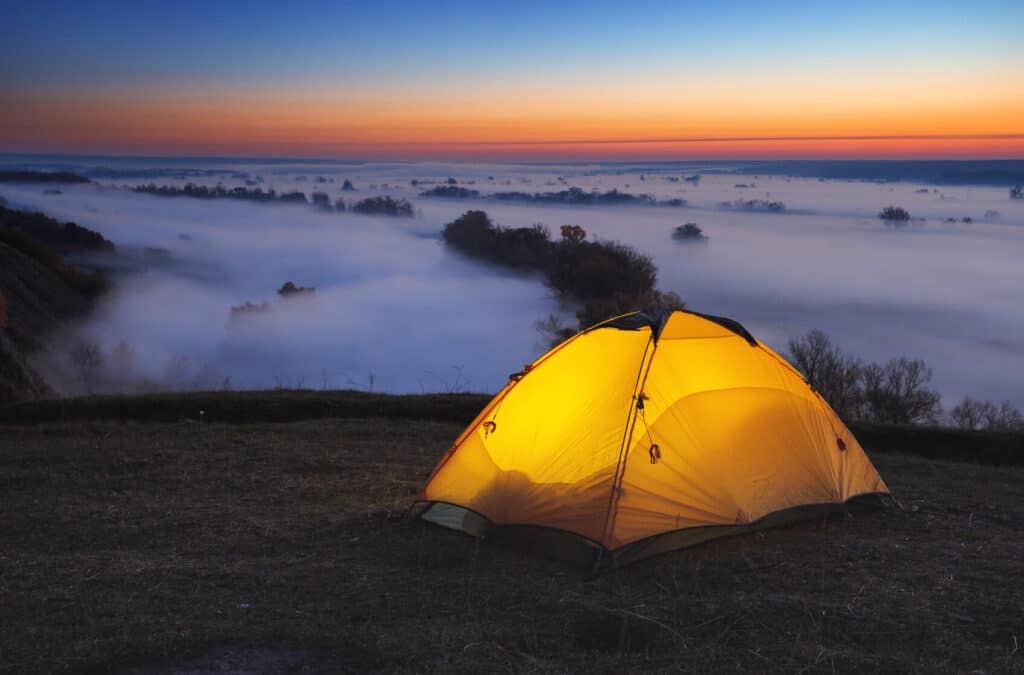
Finding Dispersed Camping Sites
Finding nearby dispersed camping sites requires a combination of research, planning, and the right tools. Here are some effective methods and resources to help you locate suitable spots:
- Apps: Utilize dedicated camping apps and websites that specialize in locating dispersed camping areas. These platforms often provide user reviews, photos, and detailed information about the amenities (or lack thereof) at each site.
We’ve got a great guide on dispersed camping apps if you’d like to learn more! - National Forest & BLM Websites: Visit the official websites of the National Forest Service (NFS) and Bureau of Land Management (BLM) to access detailed maps and information about dispersed camping regulations, permits, and available sites within their respective jurisdictions.
- Local Visitor Centers & Ranger Stations: Contact local visitor centers or ranger stations near your intended camping area. Park rangers and staff can provide current information on dispersed camping regulations, road conditions, and recommended sites based on your preferences.
- Online Forums: Join online forums, Facebook groups, or Reddit communities focused on camping and outdoor activities. These platforms often have members who share firsthand experiences, tips, and recommendations for dispersed camping sites.
Rules And Regulations
Dispersed camping on public lands comes with specific rules and regulations that campers must adhere to in order to protect the environment and ensure a safe experience for all. Here are the key legal rules you should be aware of:
Permits and Permissions
Some areas may require permits for dispersed camping, especially in high-use or sensitive environments. Check with the managing agency (e.g., NFS, BLM) for specific permit requirements and how to obtain them.
Certain regions may also have seasonal closures or restrictions due to weather conditions, wildlife protection, or fire danger. Always check for current advisories and closures before planning your trip.
Campsite Selection & Regulations
Select campsites that are at least 200 feet away from water sources such as lakes, rivers, and streams to minimize impacts on aquatic habitats.
Some areas may have limits on how long you can stay in one location (e.g., 14-day limit within a 30-day period). Be aware of these restrictions and plan accordingly.
Follow specific guidelines for campfires, including whether fires are allowed, restrictions on firewood collection, and the use of fire rings or designated fire pits.
Waste Disposal
Practice Leave No Trace principles by packing out all trash, including food scraps and biodegradable waste.
Use designated toilets where available. In the absence of facilities, bury human waste in a small hole at least 6-8 inches deep and at least 200 feet away from water sources, campsites, and trails.
Wildlife and Natural Resource Protection
Respect wildlife and observe from a safe distance. Do not feed animals or leave food unattended, as this can habituate wildlife to human presence and create dangerous situations.
Avoid damaging or disturbing vegetation. Stay on established trails or durable surfaces to minimize impact on fragile ecosystems.
Fire Safety and Restrictions
Pay attention to fire restrictions and bans that may be in place due to dry conditions or high fire danger. Use a camp stove for cooking when fires are prohibited.
Completely extinguish campfires by drowning them with water, stirring the ashes, and feeling for heat before leaving the campsite.
Respect Local Regulations and Notices
Observe signs and notices posted at trailheads, ranger stations, and camping areas for specific rules and regulations that apply to the area you are visiting.
Be aware of any additional local ordinances or regulations that may apply to dispersed camping in specific regions or counties.
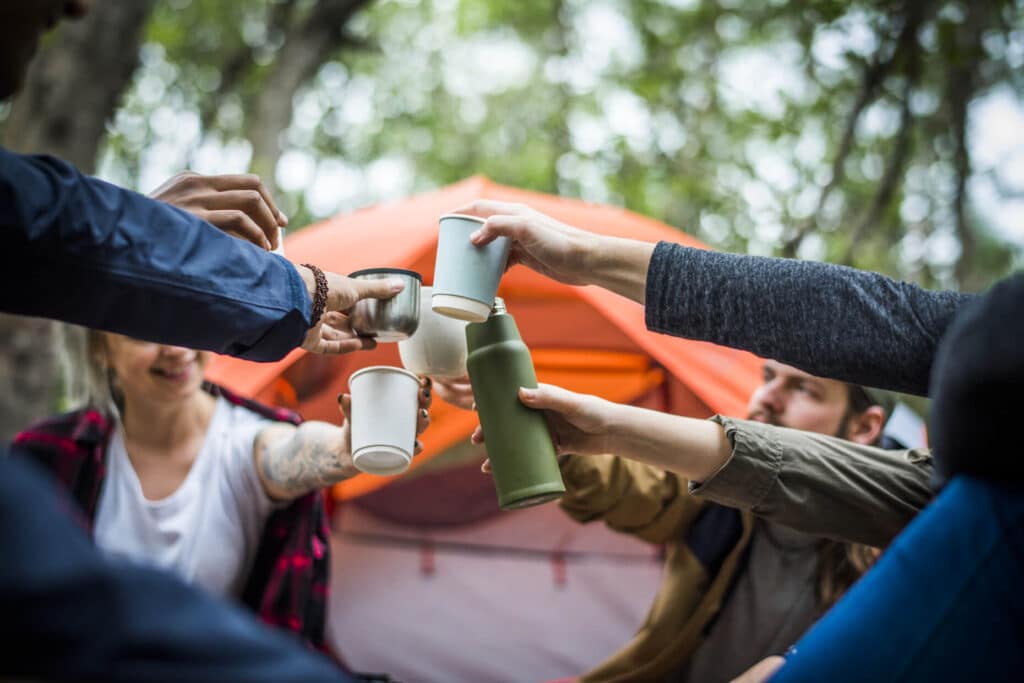
Packing For Dispersed Camping
Packing for dispersed camping requires careful planning and consideration of essential items to ensure you have a safe and comfortable outdoor experience. Here’s a comprehensive guide on what to pack:
Essential Camping Gear
- Tent or Shelter: Choose a sturdy tent or shelter suitable for the environment and weather conditions you expect to encounter.
- Sleeping Gear: Sleeping bag rated for the expected temperatures, sleeping pad or mattress for insulation and comfort.
- Cooking Equipment: Lightweight stove or campfire cooking gear, fuel, utensils, pots/pans, and biodegradable soap for cleaning.
- Navigation Tools: Map, compass, or GPS device to navigate in remote areas.
- Lighting: Headlamp or flashlight with extra batteries for nighttime visibility.
- Multi-tool or Knife: Useful for various tasks including food preparation and gear repairs.
Clothing and Personal Items
- Layered Clothing: Prepare for varying weather conditions with moisture-wicking base layers, insulating mid-layers, and a waterproof outer layer.
- Footwear: Sturdy, comfortable hiking boots or shoes suitable for the terrain, along with extra socks.
- Sun Protection: Sunscreen, sunglasses, wide-brimmed hat, and protective clothing for sun exposure.
- Personal Hygiene: Biodegradable toiletries, hand sanitizer, and a trowel for digging cat holes for waste disposal.
- First Aid Kit: Include essentials like bandages, antiseptic wipes, pain relievers, and any necessary personal medications.
Food and Water Supplies
- Water: Sufficient water bottles or hydration reservoirs, and a reliable water filtration or purification system for refilling from natural sources.
- Food: Pack non-perishable, lightweight meals and snacks suitable for outdoor cooking or quick preparation. Consider energy-rich foods for hiking and activities.
Camping Essentials
- Campsite Essentials: Lightweight camping chairs or seating, camp table (if desired), and a tarp or groundsheet to protect the tent floor.
- Fire Starting Kit: Waterproof matches, lighter, or fire starter cubes in a waterproof container.
- Trash Bags: Pack out all waste, including food scraps and packaging, to maintain Leave No Trace principles.
- Entertainment and Comfort Items: Books, games, or musical instruments for downtime enjoyment.
Personal Safety and Emergency Preparedness
- Communication: Carry a fully charged cell phone or satellite communicator (if service is available) for emergencies.
- Emergency Shelter: Pack a lightweight emergency shelter or space blanket as a backup in case of unexpected weather changes.
- Emergency Contacts: Inform someone of your itinerary and expected return date before departing for your camping trip.
Bonus Tips
In addition to essential gear and packing considerations, here are some valuable tips to enhance your dispersed camping experience:
1. Plan for Waste Management
- Pack Out Everything: Practice Leave No Trace principles by packing out all trash, including food scraps, and disposing of waste properly in designated receptacles.
- Minimize Packaging: Reduce waste by repackaging food into reusable containers and avoiding single-use items whenever possible.
2. Respect Quiet Hours and Wildlife
- Noise Considerations: Respect quiet hours to minimize disturbance to wildlife and other campers. Keep voices low and avoid loud activities during early morning and late evening hours.
- Wildlife Awareness: Store food securely and never feed wildlife. Be aware of your surroundings and follow local guidelines for wildlife encounters.
3. Be Prepared for Weather Changes
- Layer Clothing: Pack clothing layers to prepare for temperature fluctuations throughout the day and night.
- Rain Gear: Bring waterproof clothing and tarps to protect against unexpected rain showers.
4. Stay Oriented and Informed
- Maps and Navigation: Carry a detailed map and compass or GPS device to navigate unfamiliar terrain. Familiarize yourself with the area’s topography and landmarks before setting out.
- Local Regulations: Research and understand the specific rules and regulations for dispersed camping in the area you plan to visit, including any permit requirements and campfire restrictions.
5. Practice Campfire Safety
- Use Existing Fire Rings: If permitted, use established fire rings or pits for campfires to minimize impact on the environment.
- Extinguish Thoroughly: Completely extinguish campfires by dousing with water, stirring ashes, and ensuring no heat remains before leaving the campsite.
6. Embrace Minimalism and Self-Sufficiency
- Lighten Your Load: Travel light and prioritize essential items to reduce the weight of your backpack or vehicle load.
- Self-Reliance: Be self-sufficient by bringing enough food, water, and supplies for the duration of your camping trip.
7. Leave Your Campsite Better Than You Found It
- Environmental Stewardship: Leave your campsite cleaner than you found it by picking up any litter, filling in cat holes used for waste disposal, and minimizing physical impacts on the landscape.
- Educate Others: Share Leave No Trace principles with fellow campers and encourage responsible outdoor practices.
8. Practice Safety First
- Emergency Preparedness: Carry a first aid kit and know basic first aid procedures for treating minor injuries.
- Emergency Contacts: Inform a trusted person of your itinerary and expected return date. Check in with them upon your return to confirm your safe arrival.
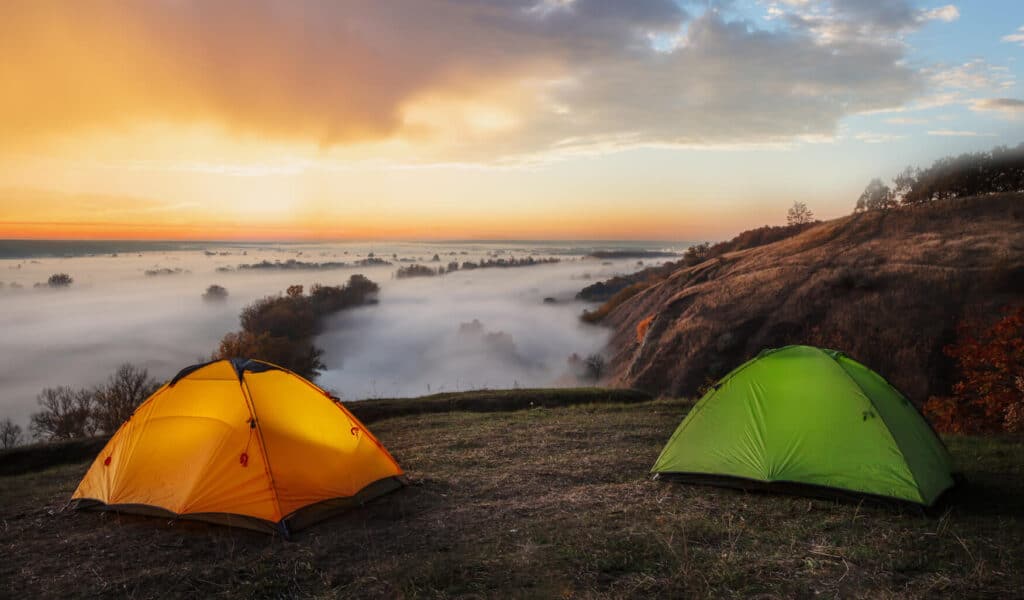
Download The Air Doctor App!
Now there’s just one thing left to do…
Make sure you don’t get sick abroad!
With the Air Doctor app in your pocket, you can access medical advice, get prescriptions, and receive expert medical guidance wherever you are in the world!
Air Doctor’s easy-to-use app gives you:
- A global network of over 20,000 multi-lingual doctors and specialists
- Choice of clinic, at-home (hotel), and video consultations
- Active in 78 countries
- Cross border prescription services
- Video consultation services in up to 21 languages and 84 countries
- 24/7 multi-lingual support
- Transparent pricing, and reviews
- Most common medical specialties



